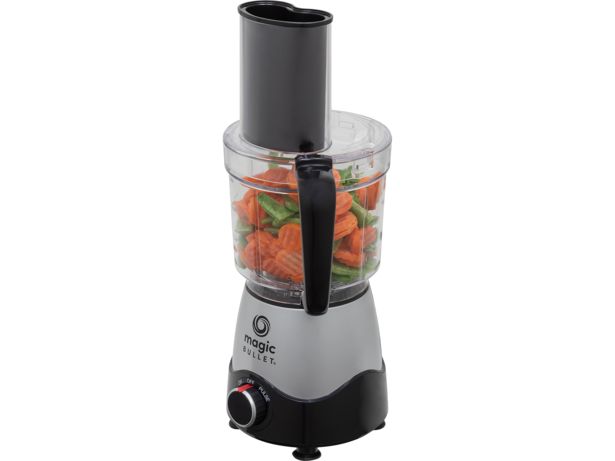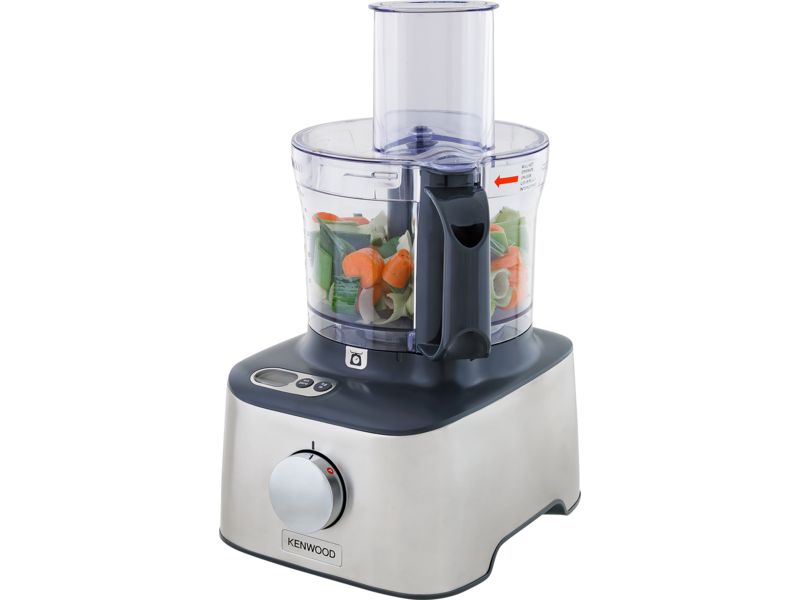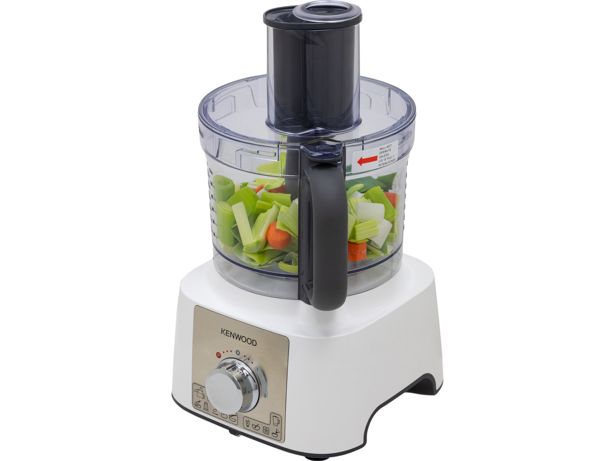How we test food processors

We test every aspect of a food processor's design and performance to make sure you have the information you need to choose the perfect model. But how do we test them?
Unlike free-to-access websites, which typically get the food processors they review free of charge directly from manufacturers, we buy all the appliances we test ourselves – so you can trust that our verdicts are objective.
In our lab, we test how well each food processor chops, slices, grates, blends, whisks, whips and crushes. We also find out how easy they are to use and clean, plus how noisy they are. We calculate each appliance's overall Which? percentage score purely on the measurements and ratings from our lab, meaning there's no room for bias.
Head straight to our best food processors to find the best model for you – or read on to learn more about how we test them.
What are Which? Best Buy and Don't Buy food processors?

A quick guide to the recommendations you'll see on our food processor reviews.
Best Buy food processors
Best Buy food processors typically excel where it really matters and score 75% or more. They’re excellent at chopping, quiet, and easy to assemble and use. But do read our reviews to check for any negatives that might make you choose one model over another.
Don't Buy food processors
Don't Buy food processors disappoint in some crucial areas and score below 45%. They might be bad at chopping and grating, louder than most and not the easiest to use or clean.
How is the Which? score calculated?
The Which? overall score is a percentage. This score only takes into account the results of our tests and ignores price completely.
This means that all food processors are tested on exactly the same scale, so you can compare any model at any price and know how it measures up against its rivals in key areas. We test all food processors in the same way, regardless of the manufacturers’ claims.
Weightings and star ratings
A Which? test score is made up of dozens of individual tests and checks, from key factors such as quality of mixing and chopping to ease of use and storage. To keep things simple, the most important scores are shown as star ratings out of five on each food processor's Test Results page as an easy-to-compare list of strengths and weaknesses, so you can quickly work out whether a model is right for you.
All of the tests below go into making the final overall score for each food processor we review. Because we know some elements are more important to users, they carry different weights:
- 70% performance
- 25% ease of use
- 5% weight and storage
Head straight to our food processor reviews to discover the models we recommend – or read on to find out more about our testing.
Our testing criteria
Below are the key testing categories and how we evaluate each one:
1. Performance
Key question: How well does the food processor chop, slice and grate?
We test each food processor with nuts, onions and flat-leaf parsley to see how well they can chop different types of food. A good food processor will consistently chop any ingredient – hard or soft – into fine, even pieces.
We slice different types of food, from soft to firm, to see how each food processor copes, and how long it takes. The slices are rated for evenness and uniformity, and we pay particular attention to how much food is left unsliced, how many slices are whole, and how many pieces have been broken or have large chunks missing from them.
Dubbed the ‘Double Gloucester test’, we check how fast and evenly each food processor grates cheese and carrots. Again, this tests how well it can grate both hard and softer foods – it can be challenging to handle both well. We deduct points if large chunks escape into the bowl, or remain on the blade, without being touched by the machine.
The image below shows real results from our tests from a good chopper, and a bad one. The nuts on the left are beautifully evenly chopped, while the ones on the right are uneven and have large unprocessed lumps.

Key question: How well does the food processor mix and knead?
We make cake batter in each food processor to test how good it is at mixing. We time how long it takes to mix and rate how evenly mixed the final result is. We also count the number of times the machine has to be stopped to scrape in unmixed ingredients from the sides. We also check how much the batter increases in volume after baking as this indicates how well the batter was mixed initially.
Food processors can take the hard work out of kneading – if they're good, that is. A well-kneaded dough will rise properly, so we time how long it takes for dough to be kneaded and to rise, measure the increase in volume and rate the evenness of dough mixing. The dough is then baked to see if it has been kneaded well enough to rise properly. Finally, we check the consistency of the baked bread to see whether there are any large air holes.
Key question: How well does the food processor whisk and whip?
To understand how well a food processor whisks and whips food, we whisk eggs and whip cream until they reach a desirable stiffness or until they reach the five-minute time limit. We then rate the results as well as measure the increase in volume, which indicates how well-mixed the ingredients are.

Key question: How well does the food processor crush?
Since some people like to add ice to their drinks, we also test how well a food processor functions in crushing ice. The size of the chunks, the amount of them and the consistency are all considered in a rating. However, this test is limited to appliances that specify they can perform this function or have the necessary attachments.
Key question: How well does the food processor blend?
Similarly, if the food processor comes with a blender attachment – be it a jug or a blending tool – we test it out. We time how quickly food can be puréed and how well it's blended. We look for a fine and even blend, so your smoothies and soups are tasty and lump-free.
How well a food processor chops, slices, grates, mixes, kneads, whips, and if applicable, how well it crushes and blends makes up 70% of the total test score.
2. Ease of use

Key question: Is the food processor noisy?
When you look at a food processor in a shop, you have no way of telling whether it can quietly take care of your kitchen tasks or if it makes a racket. We take into account motor noise, the sound of any vibrations while the food processor is working and any rattling of attachments.
Key question: How easy is the food processor to set up and clean?
Some food processors come with a confusing array of attachments or bowls that are tricky to fit and swap – or unnecessarily difficult to get clean. Which? members have told us that the ease of assembling food processors and cleaning the attachments and bowl are two of the most important considerations when buying a new model.
To make sure you don't end up with a machine that's more hassle than it's worth, we check how easy it is to fit and swap attachments and whether it's easy to clean.
How easy a food processor is to use and clean, and how quiet it is contributes 25% to the total test score.
3. Weight and storage

The weight of a food processor is an important factor to consider if you store it in a cupboard. This is why we rate each appliance on how easy it is to move and whether the attachments fit into the appliance for storage.
How easy a food processor is to pick up and store makes up 5% of the total test score.
Improvements to our tests
We're constantly improving our tests, so you can be sure that the food processors earning our Best Buy recommendation really are the best.
- In May 2023, we increased the score needed for food processors to earn a Best Buy. For this reason, a few models lost our Best Buy recommendation. They are still good products but no longer meet the criteria to carry the endorsement.
- In 2018, we updated our food processor tests. This means that models reviewed before 2018 have been tested slightly differently from more recent models, and aren't directly comparable. However, you can still generally compare results for food processors tested before 2018 with those tested after, and each product's score still gives a good idea of how it will perform.
See all our food processor reviews to compare models and find the best for you.



